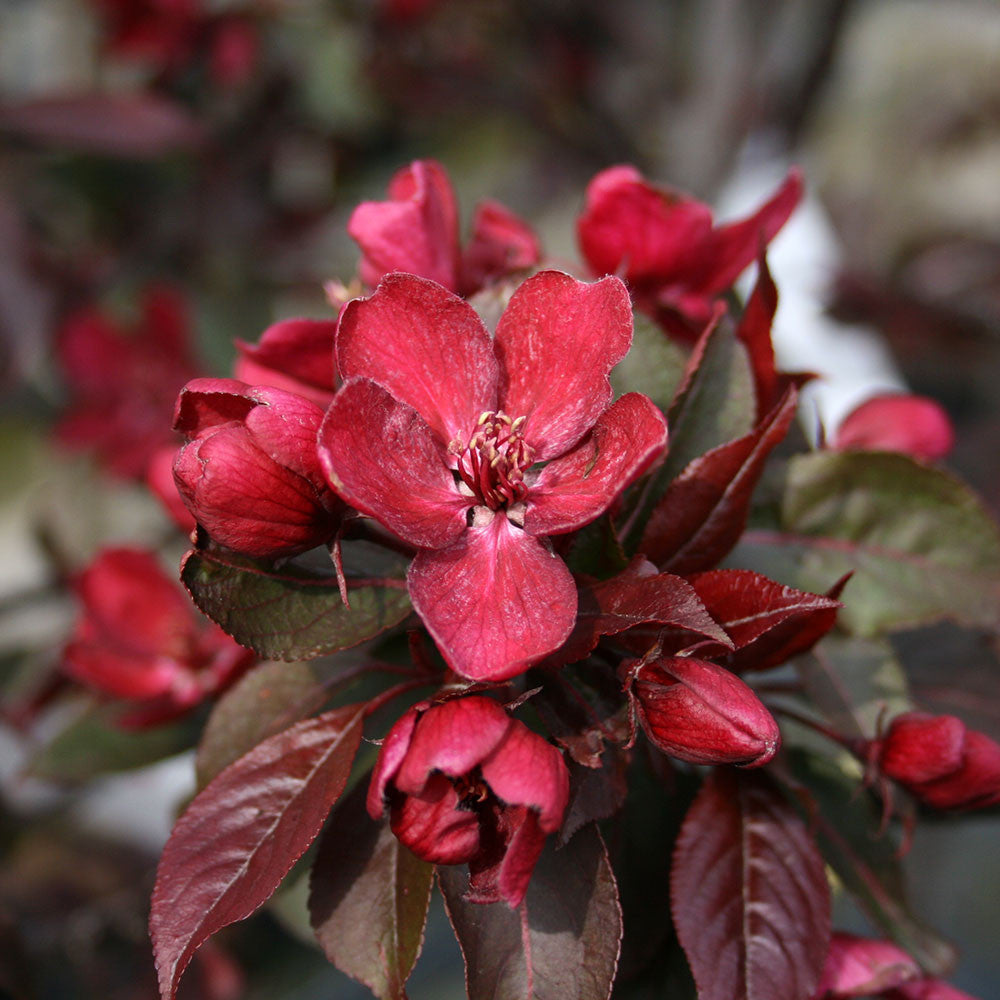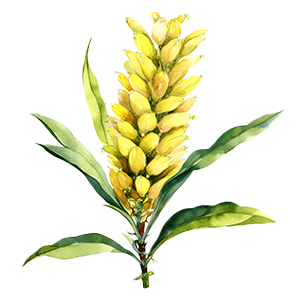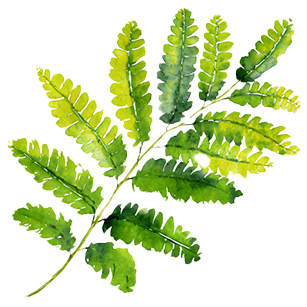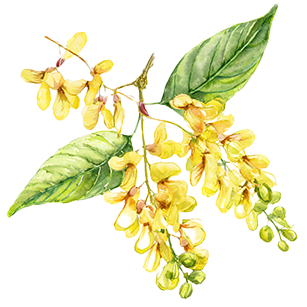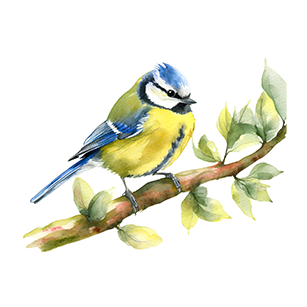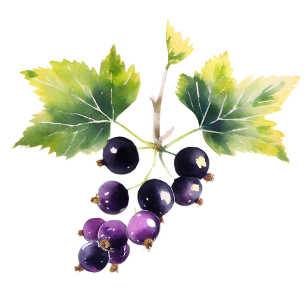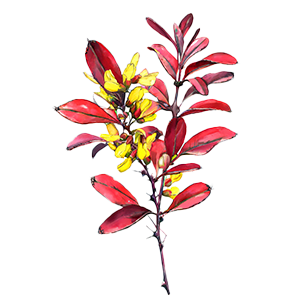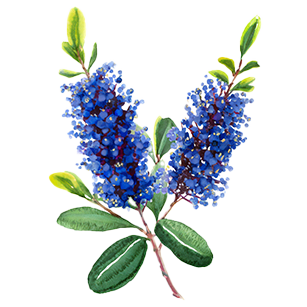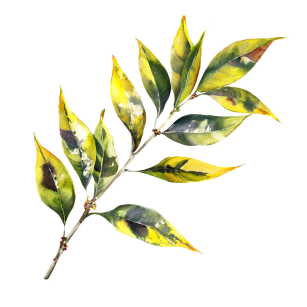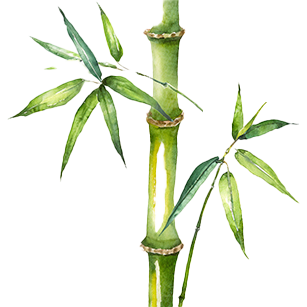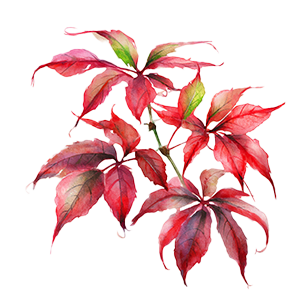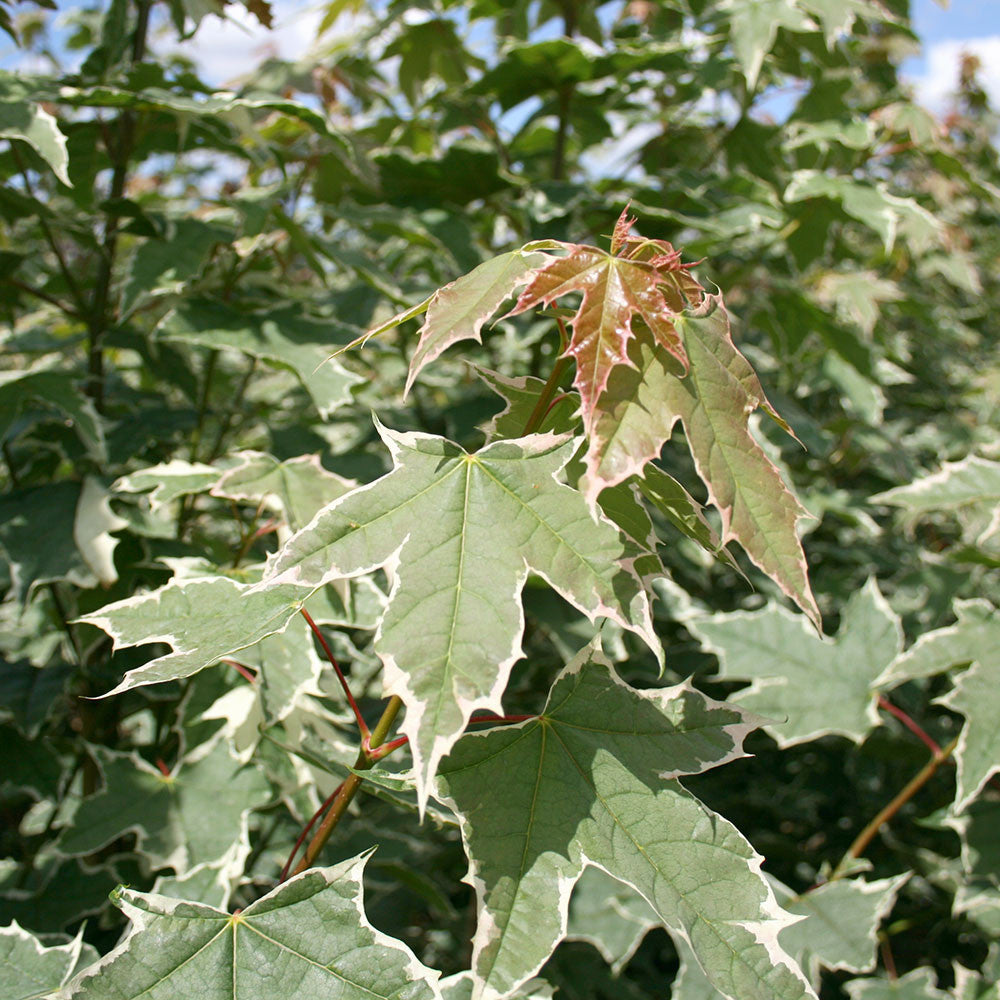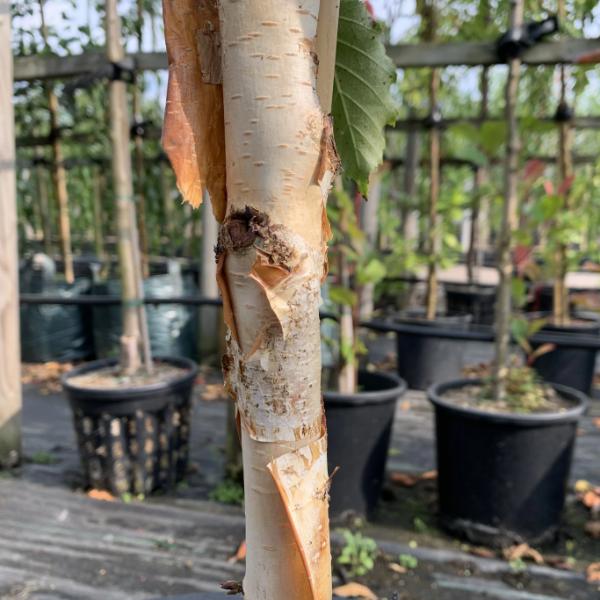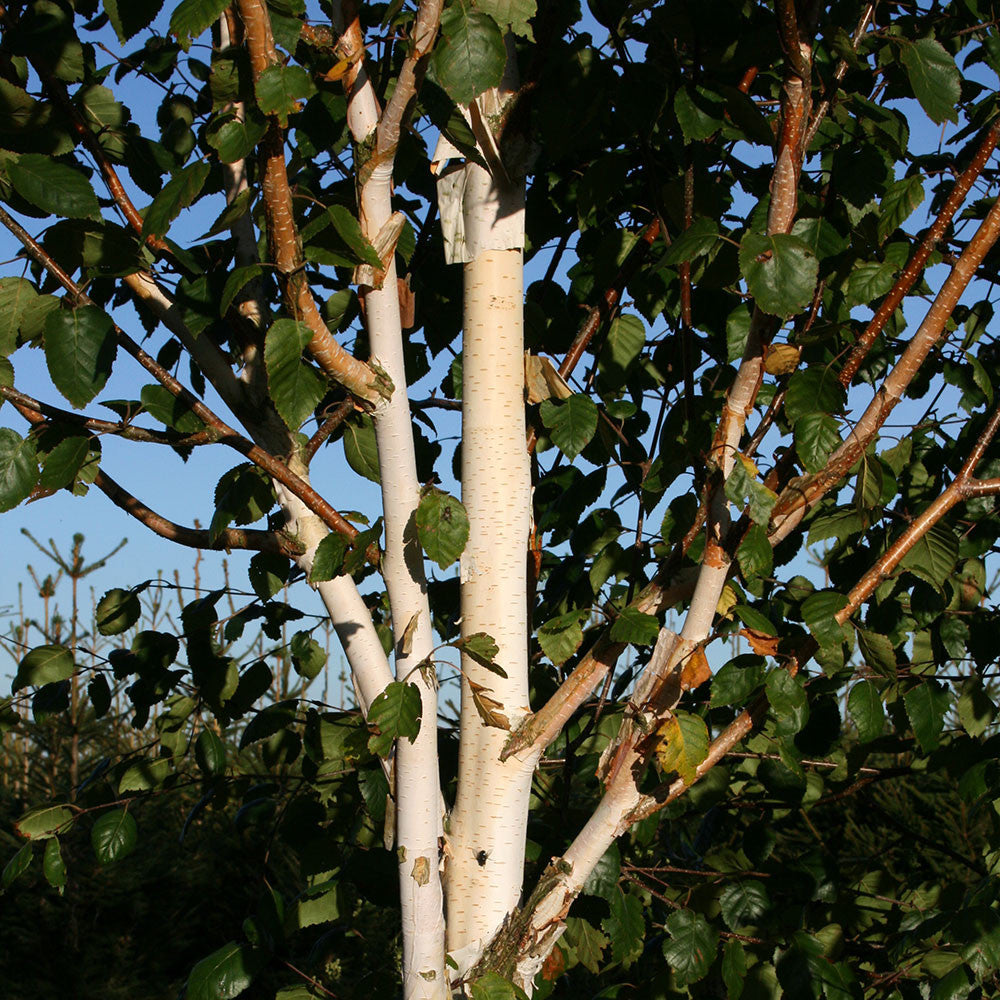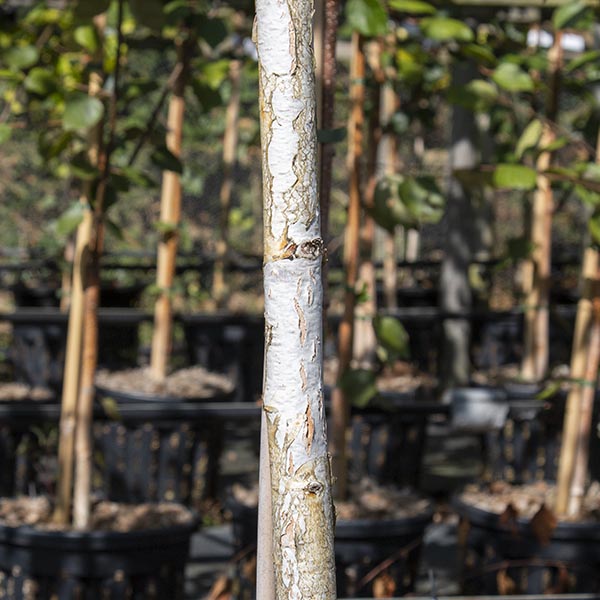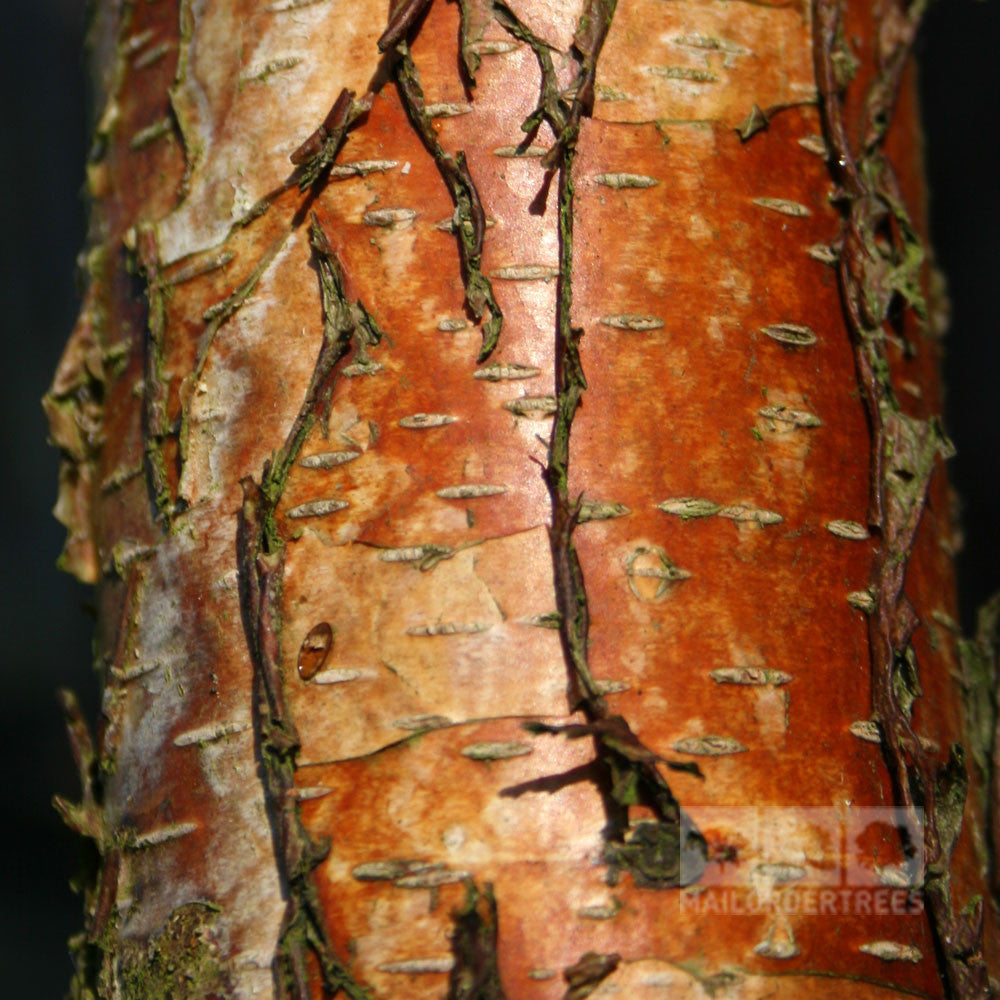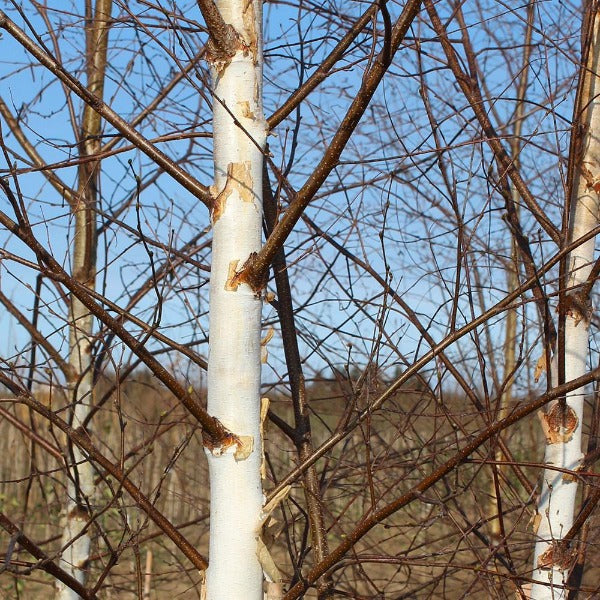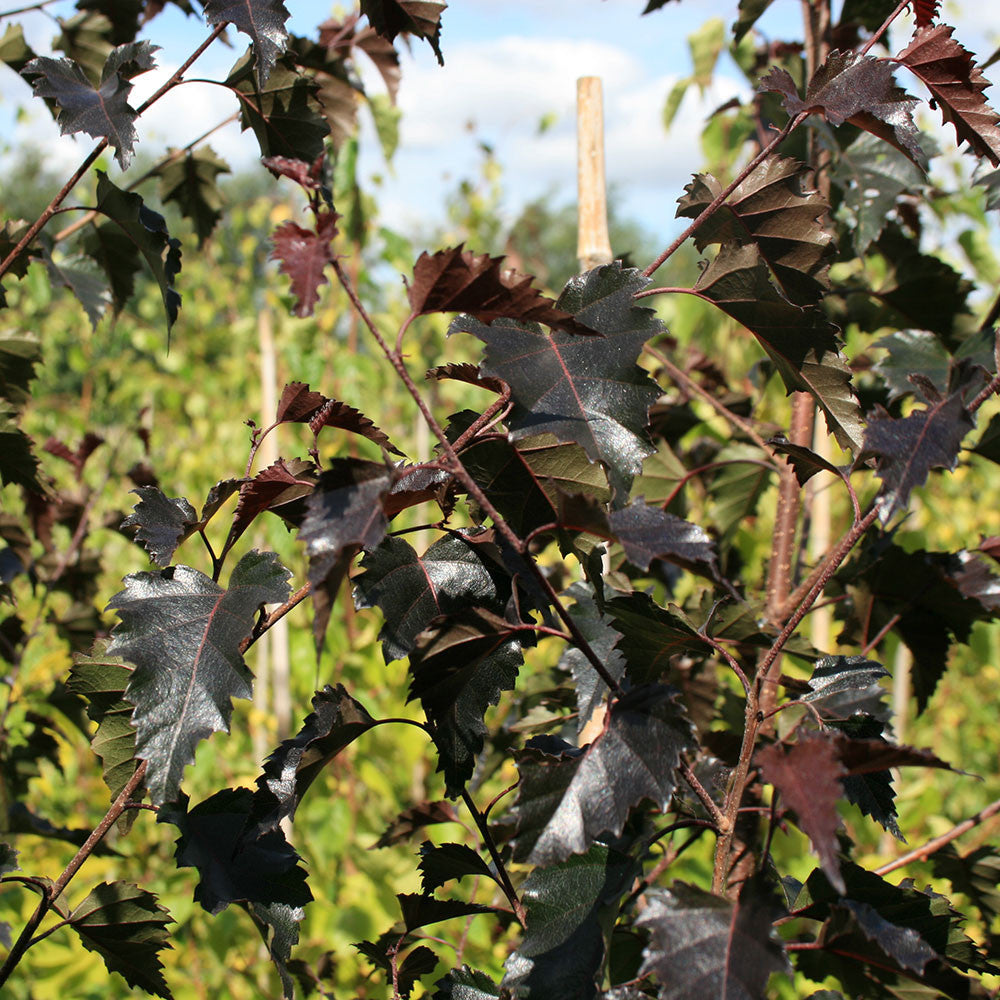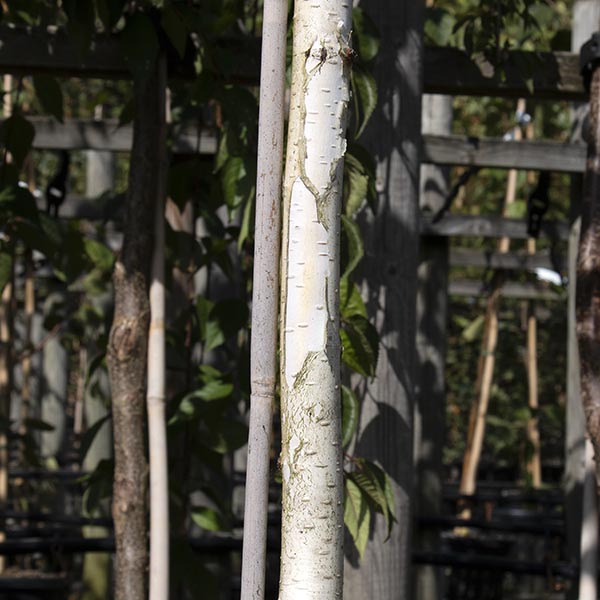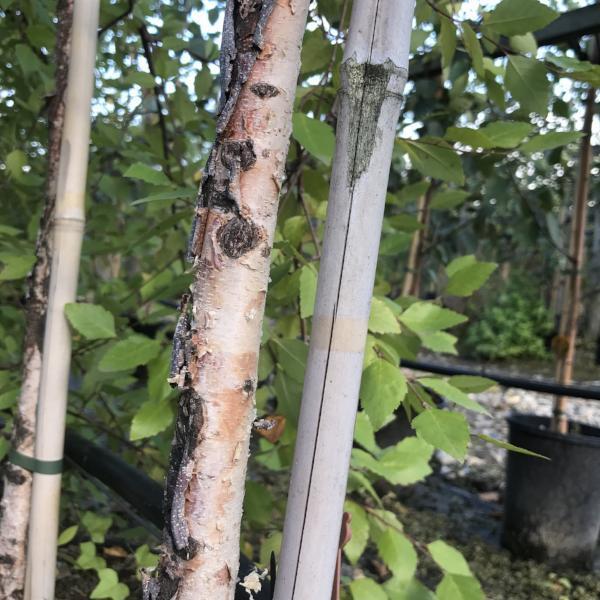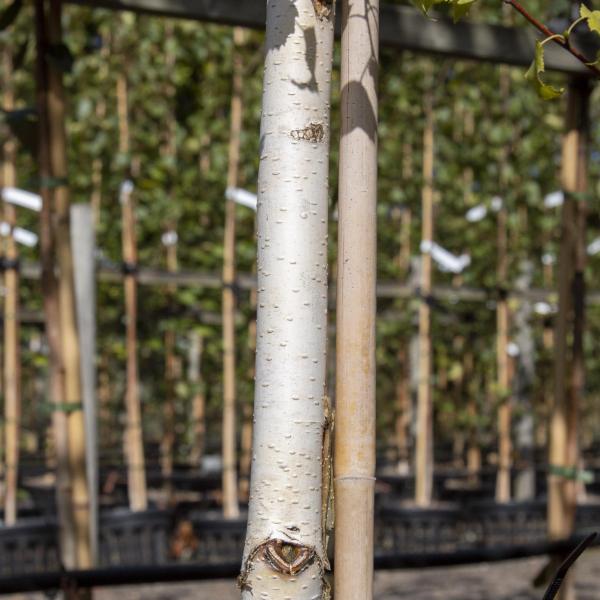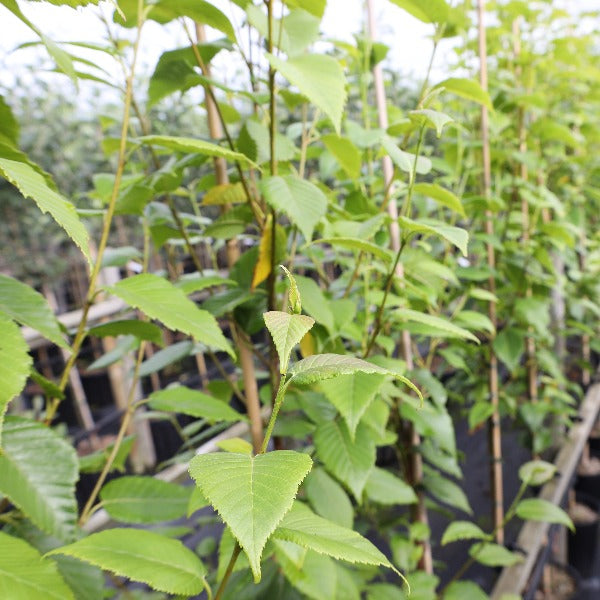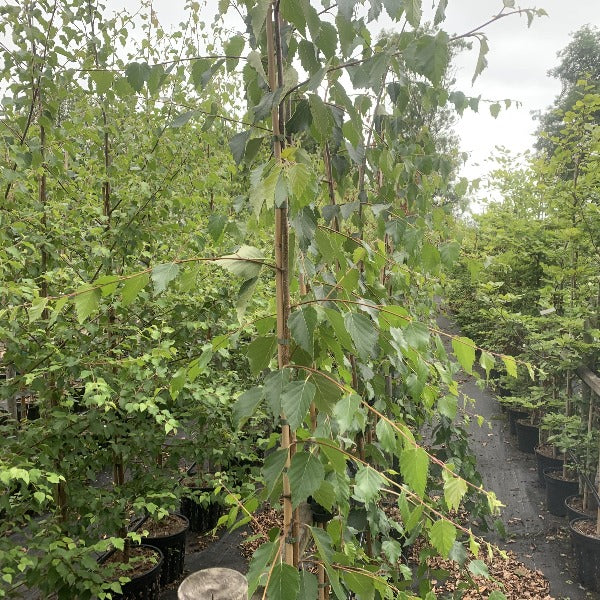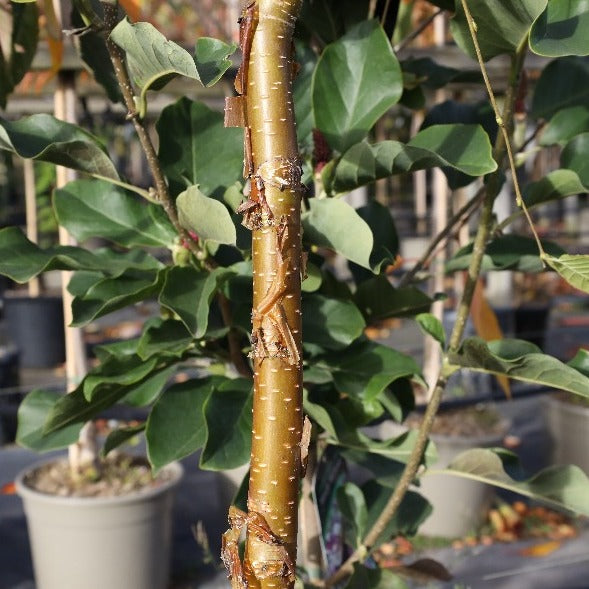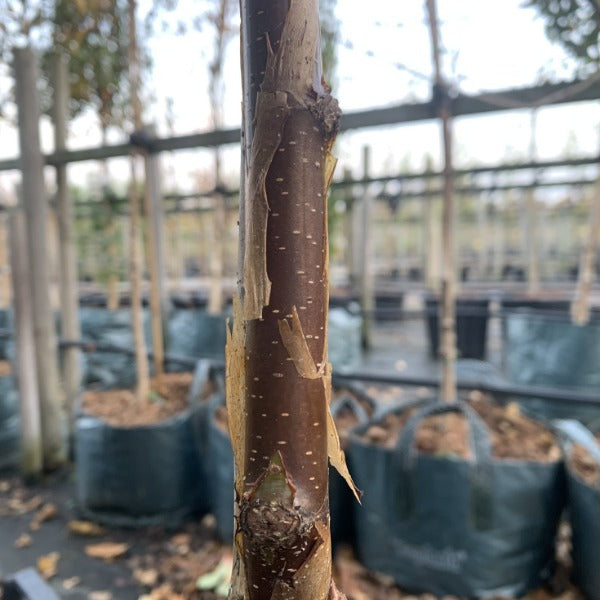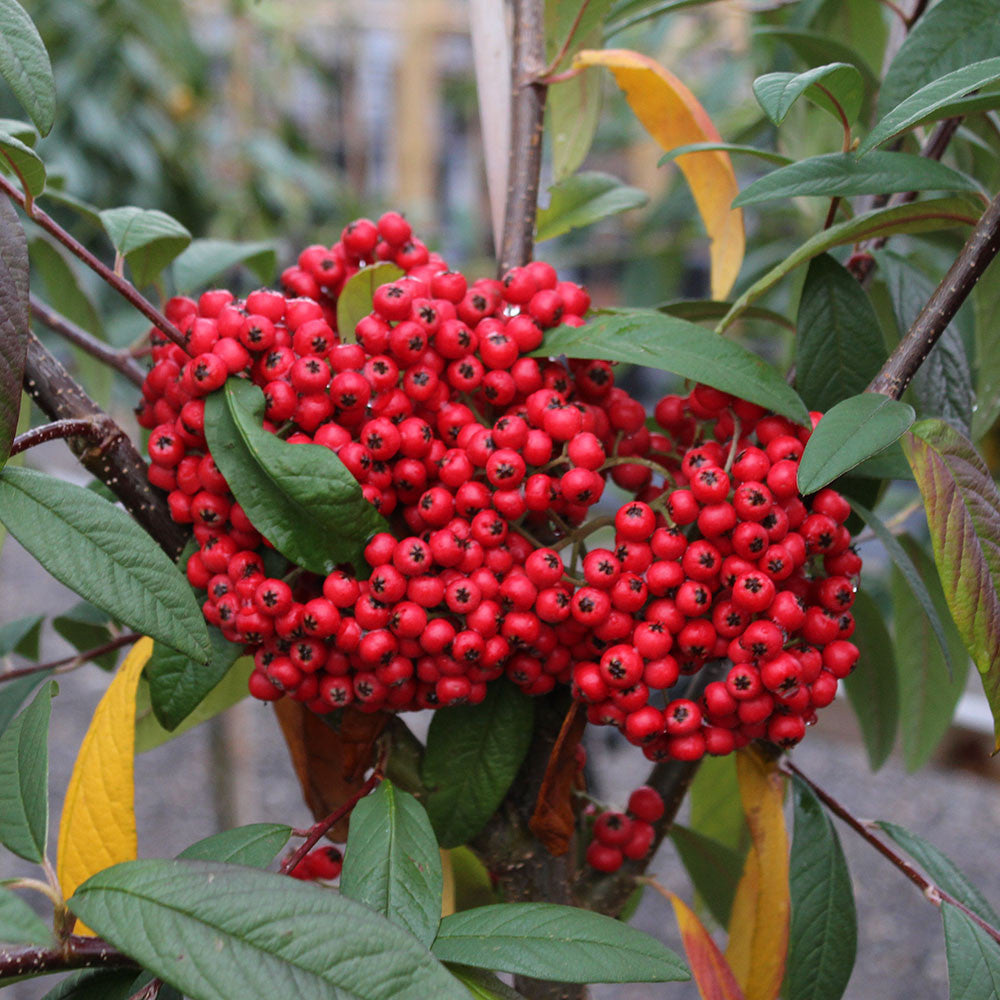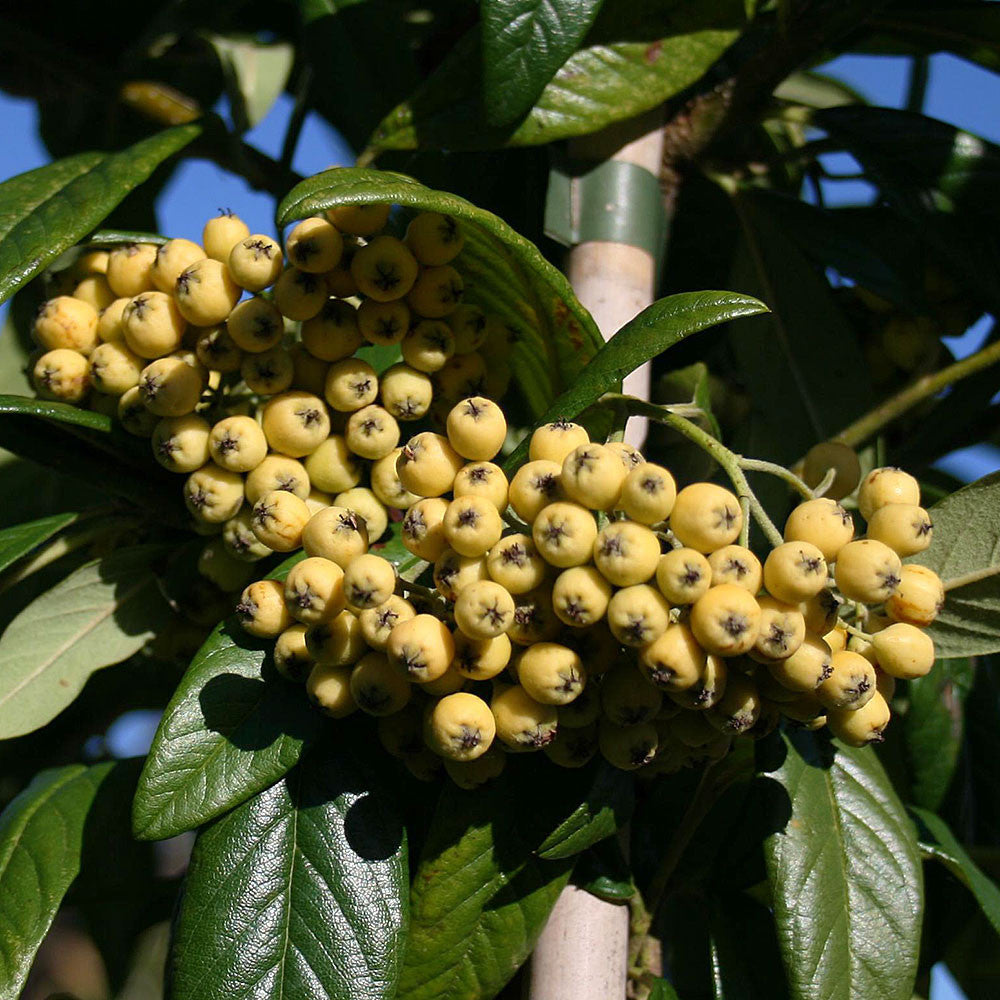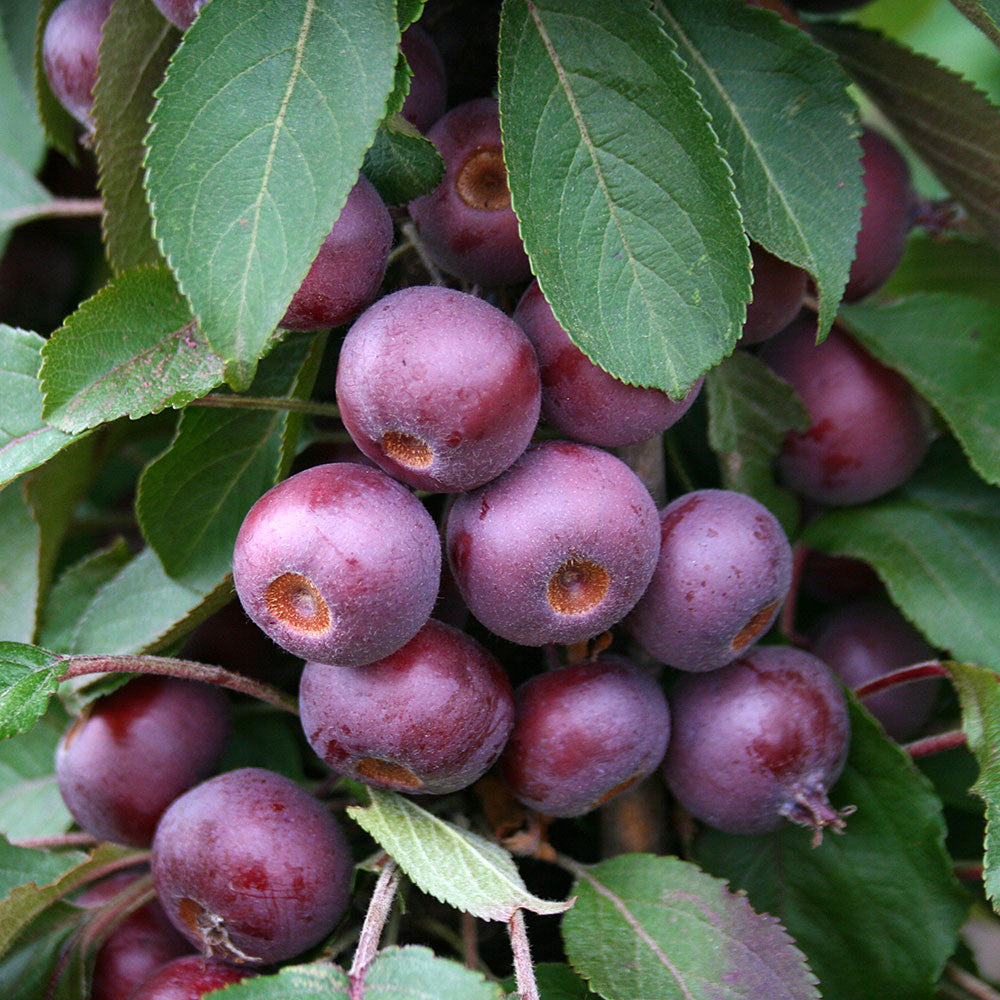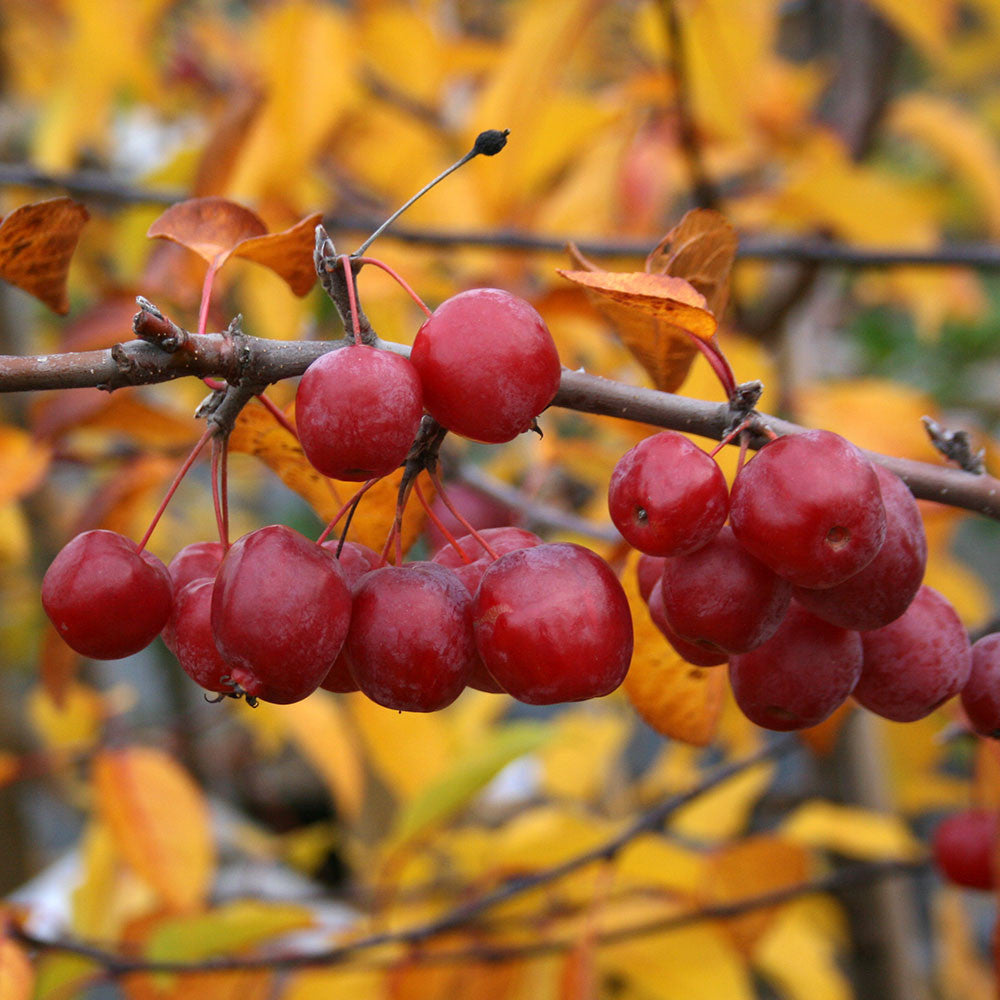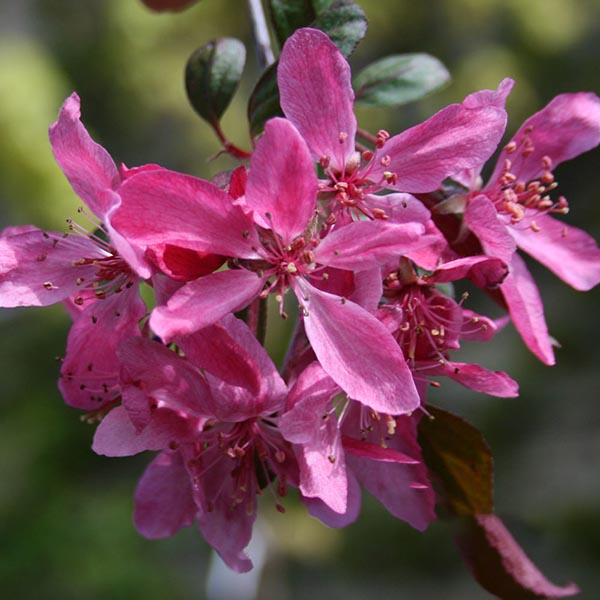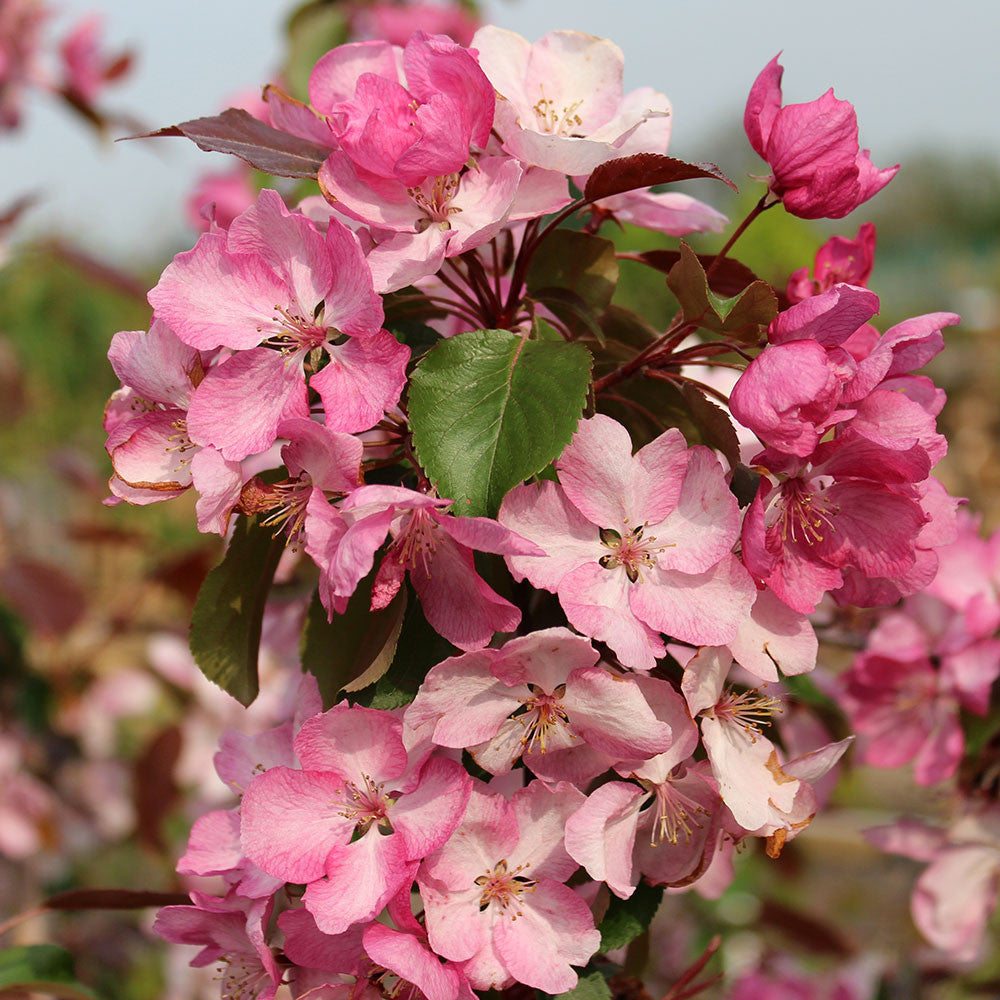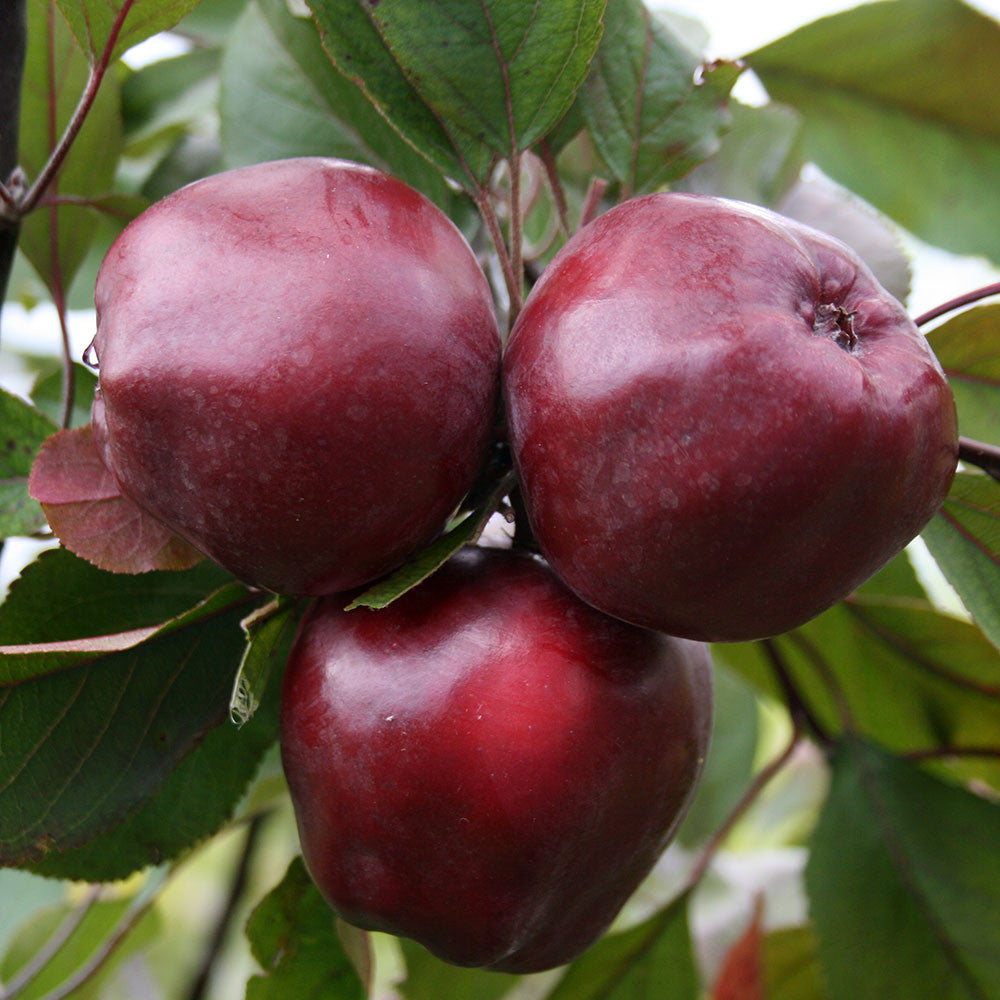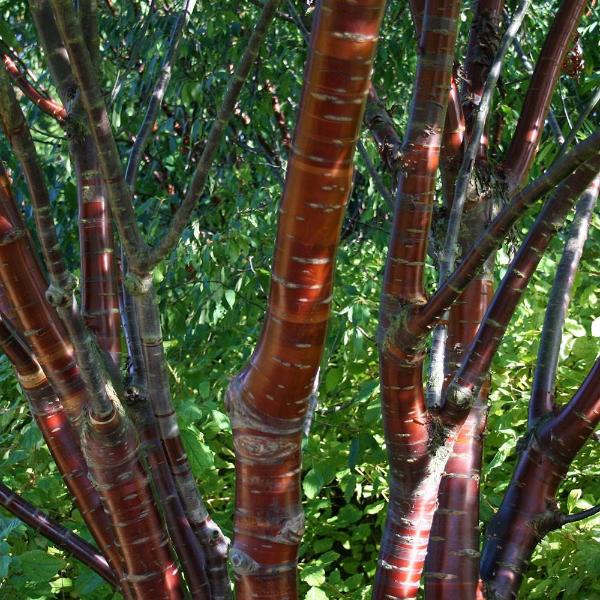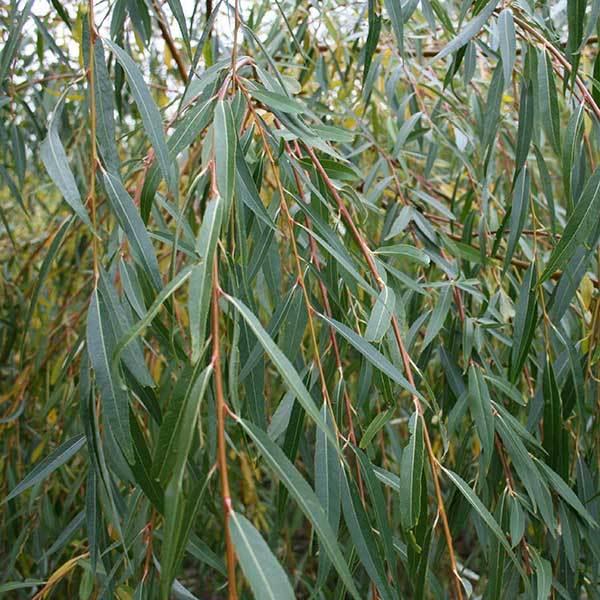Malus Laura
Laura Crab Apple Tree
Common Name: Laura Crab Apple TreeLatin Name: Malus 'Laura'Soil: Fertile, well-drained soilPosition: Full sun or partial shadeFlowering period/colour: April/Pink and WhiteHardiness: Fully hardyHeight and spread in 10 years: 3m x 1.5mSpecial features: Ideal for small gardens due to its naturally dwarf habit.Malus 'Laura' is a naturally dwarf tree with a good upright habit suitable for even the smallest garden. This charming variety of Crab Apple Tree is the perfect combination of seasonal colour and fruit.
With its profuse spring blossom, decorative fruit, and compact growth habit, it can light up any outdoor space.Thriving in well-drained soil and adaptable to varying light conditions, the Malus ‘Laura’ is a resilient specimen.
In spring, it showers your garden with an abundance of pale pink to white flowers, which are also fragrant.As the seasons move forwards, the Malus ‘Laura’ continues to deliver. In summer, its foliage provides a lovely backdrop, while in autumn, the leaves change to shades of gold and bronze, which really dial up the autumnal energy.One of the best features of this tree is its fruit. In late summer and early autumn, it offers clusters of large, maroon fruit, which are adored by local wildlife. The fruits are also perfect for making crab apple jelly due to very high pectin content (the natural gelling agent found in ripe fruits).With a projected height of 3 metres and a spread of 1 metre over a 20 year period, the Malus ‘Laura’ is a compact and manageable tree, making it suitable for gardens large or small.
The Malus ‘Laura’ can work as standalone tree to show off its spring blossom. Alternatively, you can also plant it in mixed planting projects to give contrast and depth to your space.Pick up a Malus ‘Laura’ today and enjoy its colours, flowers and fruits for years on end.
